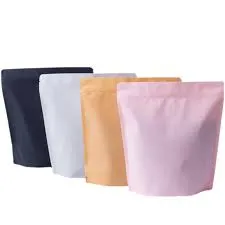- Afrikaans
- Albanian
- Amharic
- Arabic
- Armenian
- Azerbaijani
- Basque
- Belarusian
- Bengali
- Bosnian
- Bulgarian
- Catalan
- Cebuano
- chinese_simplified
- chinese_traditional
- Corsican
- Croatian
- Czech
- Danish
- Dutch
- English
- Esperanto
- Estonian
- Finnish
- French
- Frisian
- Galician
- Georgian
- German
- Greek
- Gujarati
- haitian_creole
- hausa
- hawaiian
- Hebrew
- Hindi
- Miao
- Hungarian
- Icelandic
- igbo
- Indonesian
- irish
- Italian
- Japanese
- Javanese
- Kannada
- kazakh
- Khmer
- Rwandese
- Korean
- Kurdish
- Kyrgyz
- Lao
- Latin
- Latvian
- Lithuanian
- Luxembourgish
- Macedonian
- Malgashi
- Malay
- Malayalam
- Maltese
- Maori
- Marathi
- Mongolian
- Myanmar
- Nepali
- Norwegian
- Norwegian
- Occitan
- Pashto
- Persian
- Polish
- Portuguese
- Punjabi
- Romanian
- Russian
- Samoan
- scottish-gaelic
- Serbian
- Sesotho
- Shona
- Sindhi
- Sinhala
- Slovak
- Slovenian
- Somali
- Spanish
- Sundanese
- Swahili
- Swedish
- Tagalog
- Tajik
- Tamil
- Tatar
- Telugu
- Thai
- Turkish
- Turkmen
- Ukrainian
- Urdu
- Uighur
- Uzbek
- Vietnamese
- Welsh
- Bantu
- Yiddish
- Yoruba
- Zulu
Exploring the Versatility and Applications of Carton Board in Packaging Solutions
Understanding Carton Board An Essential Material in Packaging and More
Carton board, often referred to as cardboard, is a versatile and essential material widely used in various industries, including packaging, construction, and art. Characterized by its lightweight, durability, and adaptability, carton board has transformed how products are packaged, transported, and displayed. This article delves into the properties, manufacturing processes, applications, and environmental impact of carton board, offering insights into why it remains a favorite choice across sectors.
Properties and Types of Carton Board
Carton board is primarily made from cellulose fibers obtained from wood, recycled paper, or other plant materials. Its composition makes it lightweight yet robust, enabling it to withstand various stresses during transportation and storage. The structure of carton board can vary significantly, with different types designed to meet specific requirements.
The main types of carton board include
1. Solid Bleached Sulfate (SBS) Known for its high-quality finish, SBS is often used for premium packaging such as cosmetics and food products. The smooth surface allows for high-resolution printing, making it visually appealing.
2. Coated Unbleached Kraft (CUK) This type is recognized for its strength and durability. It is commonly used for products that require sturdiness, such as food containers and shipping boxes.
3. Folding Box Board (FBB) Comprised of several layers, FBB is lightweight yet strong, making it a popular choice for a wide range of applications, including pharmaceuticals and consumer goods.
4. Recycled Board As sustainability gains importance, recycled board has become a prevalent choice. Made from post-consumer waste, it reduces the environmental footprint while still providing adequate strength and utility.
Manufacturing Process
The production of carton board involves several steps, starting from the collection of raw materials to the final product. The manufacturing process typically includes
1. Pulping Raw materials, mainly wood chips or recycled paper, undergo a pulping process to break down fibers. This stage can be done through mechanical, chemical, or semi-chemical methods.
2. Sheet Formation The pulp is mixed with water and spread onto conveyor belts to form sheets. This sheet formation is crucial as it determines the thickness and texture of the final product.
carton board

3. Drying and Pressing The sheets are then pressed and dried to remove excess moisture, ensuring the board achieves the desired strength and rigidity.
4. Coating and Finishing For some types of carton board, a coating is applied to enhance print quality and moisture resistance. Additional finishing processes, such as cutting and scoring, prepare the boards for their specific applications.
Applications of Carton Board
The functionalities of carton board make it suitable for a wide array of applications
- Packaging The most common use of carton board is in packaging products. It provides excellent protection to goods during transport and storage while facilitating branding through printed designs.
- Display and Retail Retailers often use carton board for product displays due to its lightweight nature, allowing easy transportation and assembly.
- Arts and Crafts In artistic domains, carton board is a favored material for creating models, scrapbooks, and various craft projects, thanks to its workability and ease of manipulation.
- Construction and Furniture Innovative uses of carton board in building lightweight structures and furniture have emerged, promoting eco-friendly alternatives in construction.
Environmental Impact
One of the most significant advantages of carton board is its potential for sustainability. Being primarily made from renewable resources, it is biodegradable and recyclable, helping reduce landfill waste. Many manufacturers are committed to sustainable practices, using recycled materials and minimizing the use of harmful chemicals during production. However, it is crucial to balance these benefits with responsible sourcing of wood fibers to protect forests and ecosystems.
Conclusion
Carton board is more than just an everyday material; it stands at the intersection of functionality, sustainability, and aesthetics. Its diverse applications, coupled with an environmentally friendly profile, make it a staple in various industries. As we continue to innovate and improve the ways we use resources, carton board will undoubtedly play an essential role in shaping the future of packaging and beyond. With a commitment to sustainability and efficiency, the carton board industry can contribute significantly to a greener planet while meeting the ever-evolving needs of consumers and businesses alike.













